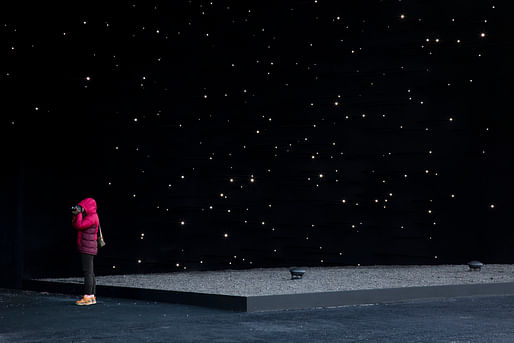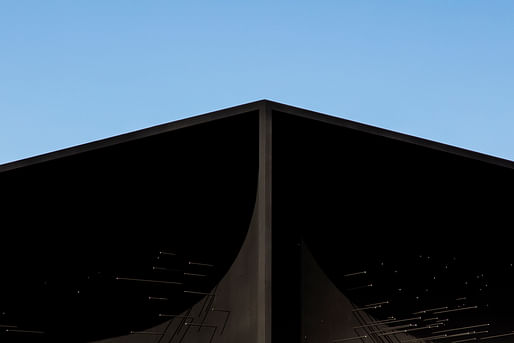
Sprayed with Vantablack Vbx2, a pavilion at the Winter Olympics in South Korea absorbs 99% of light. [...]
Lurking between the competition venues like an angular black hole, it looks like a portal to a parallel universe, waiting to suck unsuspecting ski fans into its vortex.
— The Guardian
Sports fans around the world can't wait for the 2018 Pyeongchang Winter Olympics to officially open tomorrow, but there's more to the spectacle than just athletic competitions on snow and ice: London-based architect & designer Asif Khan has created the "darkest building on earth" by coating the temporary pavilion he designed for South Korean car maker Hyundai in Vantablack Vbx2, a super-black nanomaterial which absorbs more than 99% of the light that reaches its surface — the result is the visual illusion of a massive black void.


"It’s like a nano-scale coral reef," The Guardian quotes Ben Jensen, chief technical officer of Surrey Nanosystems, the British company which has developed the mysterious material. "Photons get into it and they bounce around within its structure until they’re all absorbed. The optical cavities in the ‘reef’ are around 1,000th the width of a human hair."
The (now) 38-year-old Khan already gained popularity during the 2014 Winter Olympics in Sochi, where he designed a temporary pavilion that could transform its facade into 3D projections of visitors' faces — a building aptly dubbed the "selfie building."
2 Comments
I was building a lego model with mostly black pieces the other day, it's a pain in the ass not to see the shapes.
staggering accomplishment. can architects continue after this? or have we reached peak architecture? can someone at least clean that glitter off?
Block this user
Are you sure you want to block this user and hide all related comments throughout the site?
Archinect
This is your first comment on Archinect. Your comment will be visible once approved.